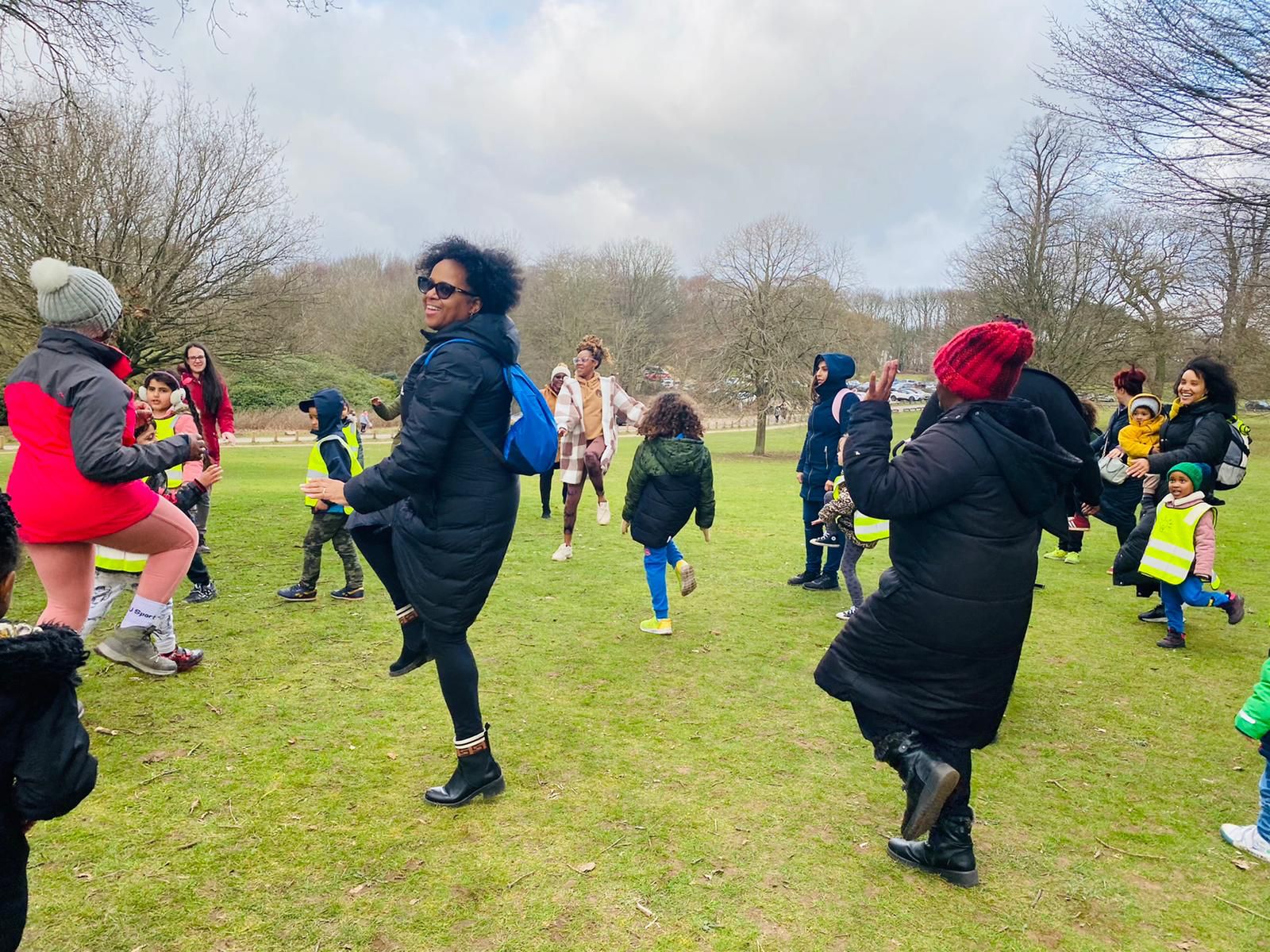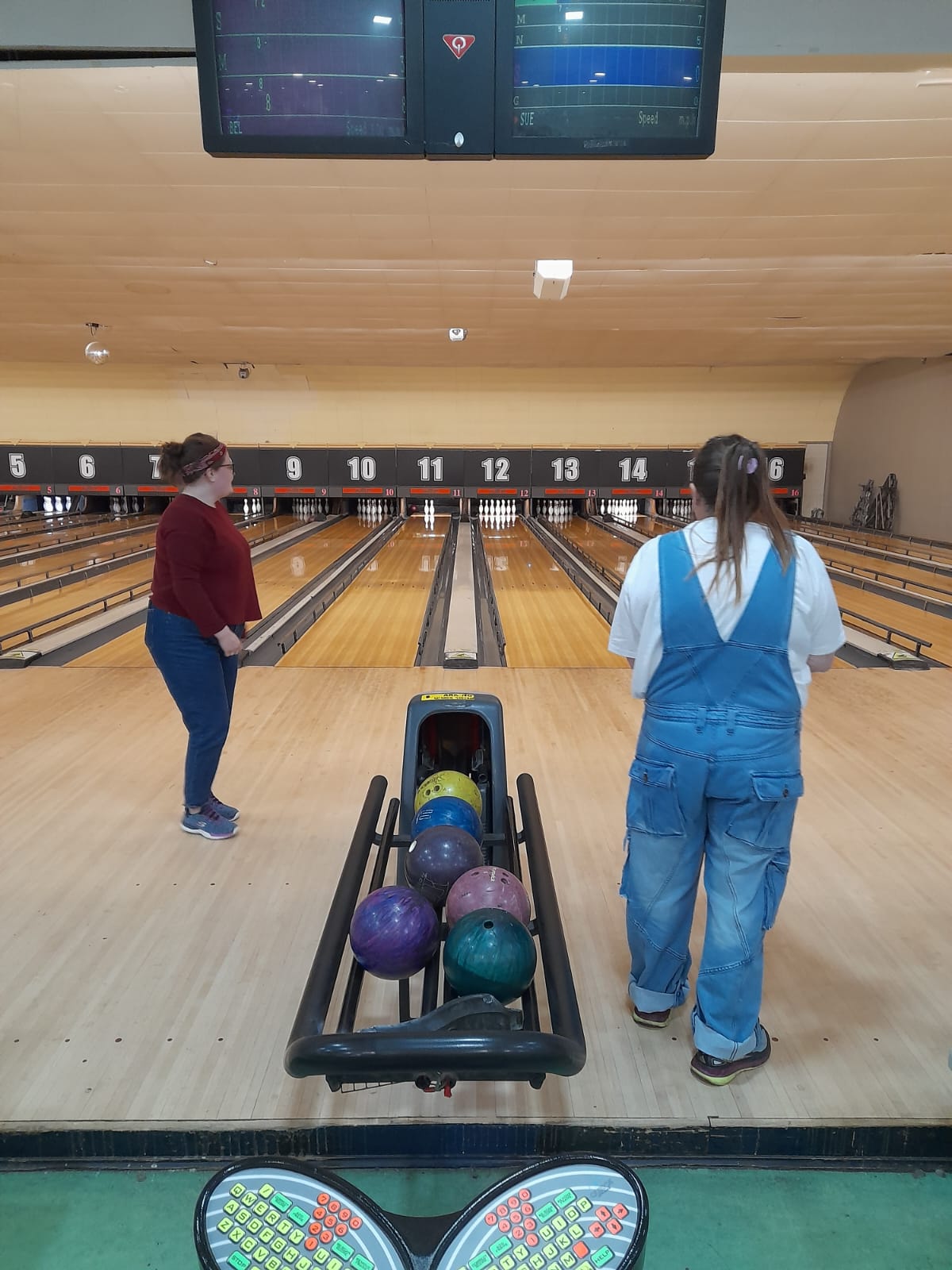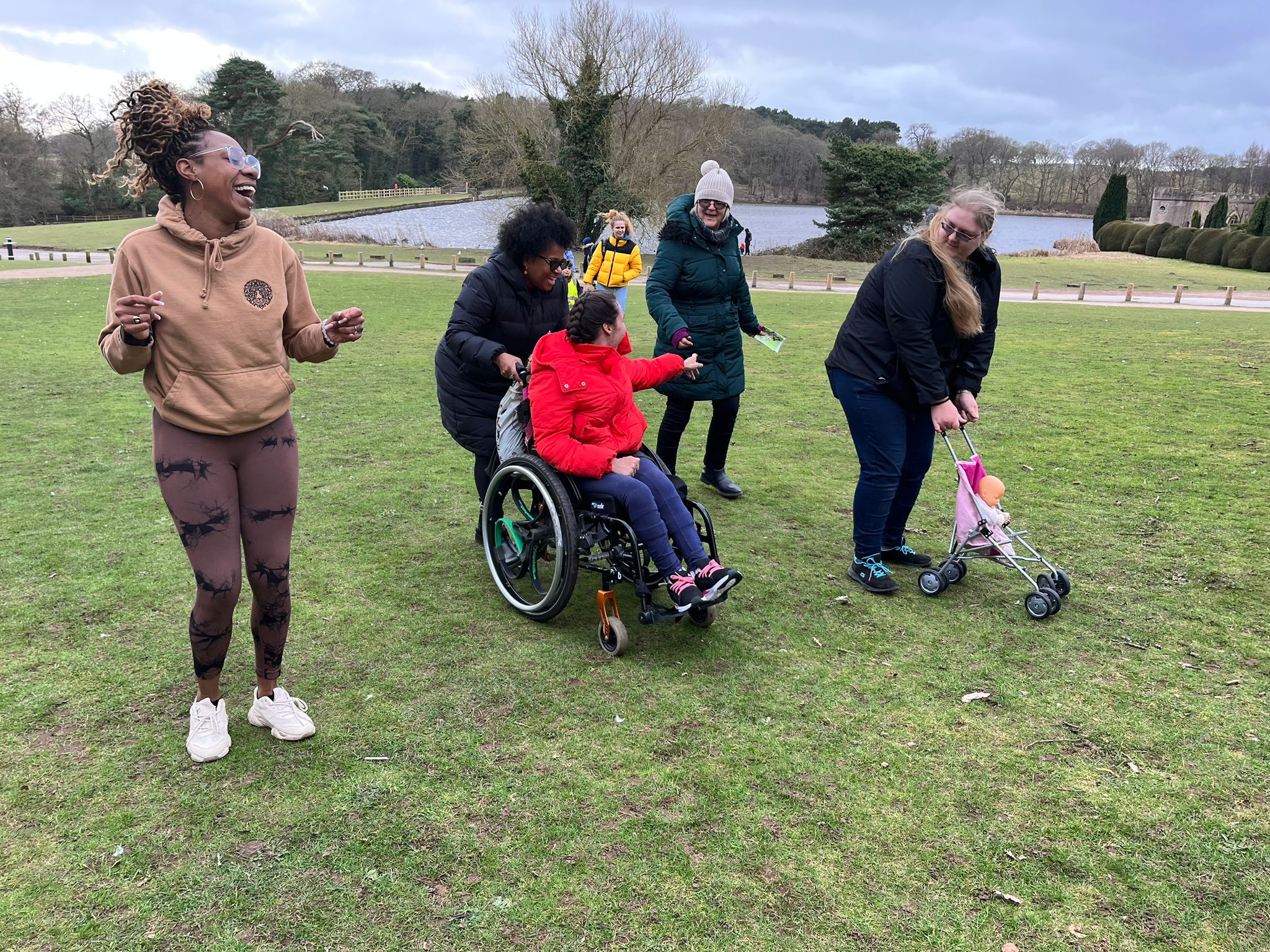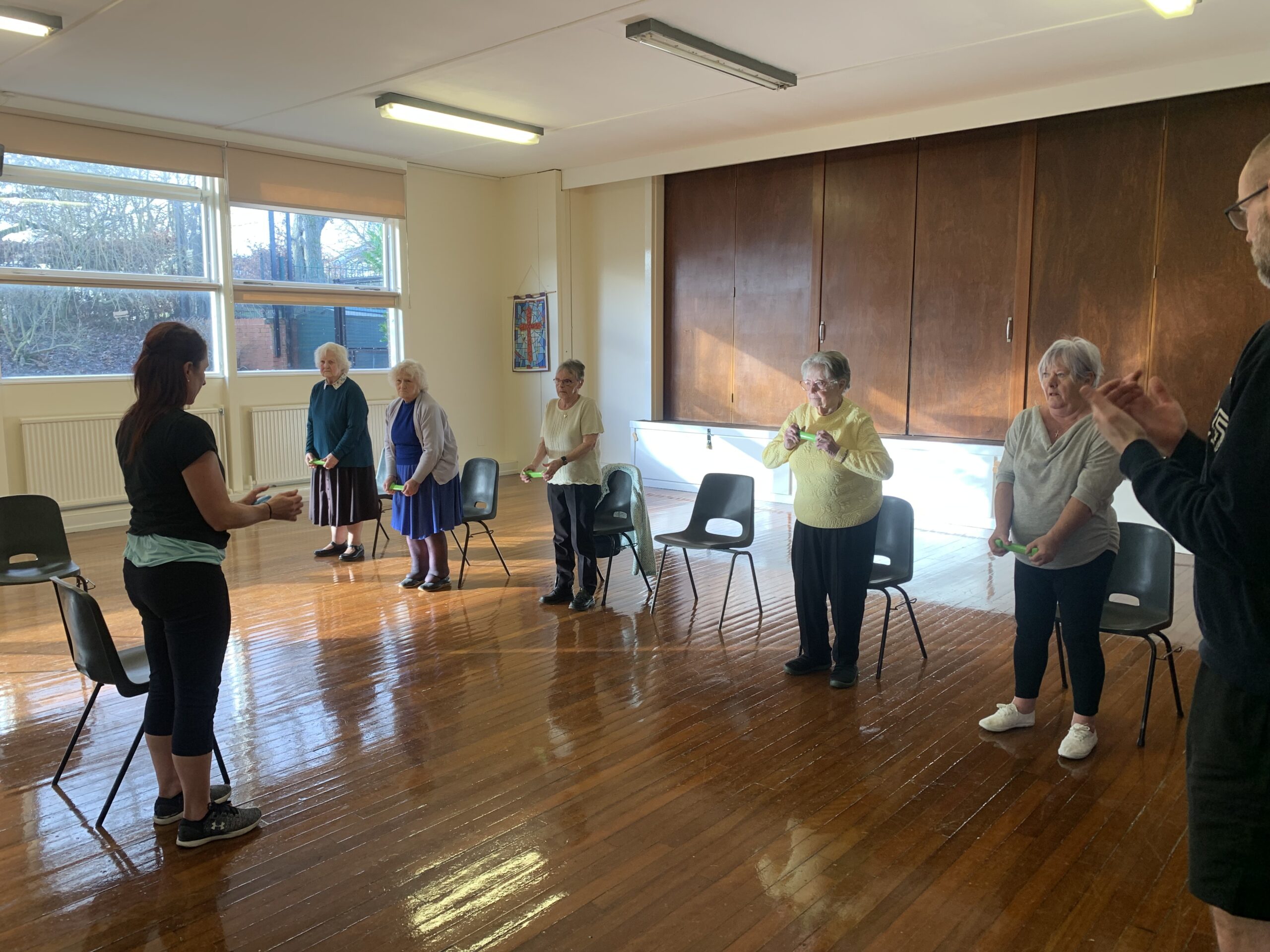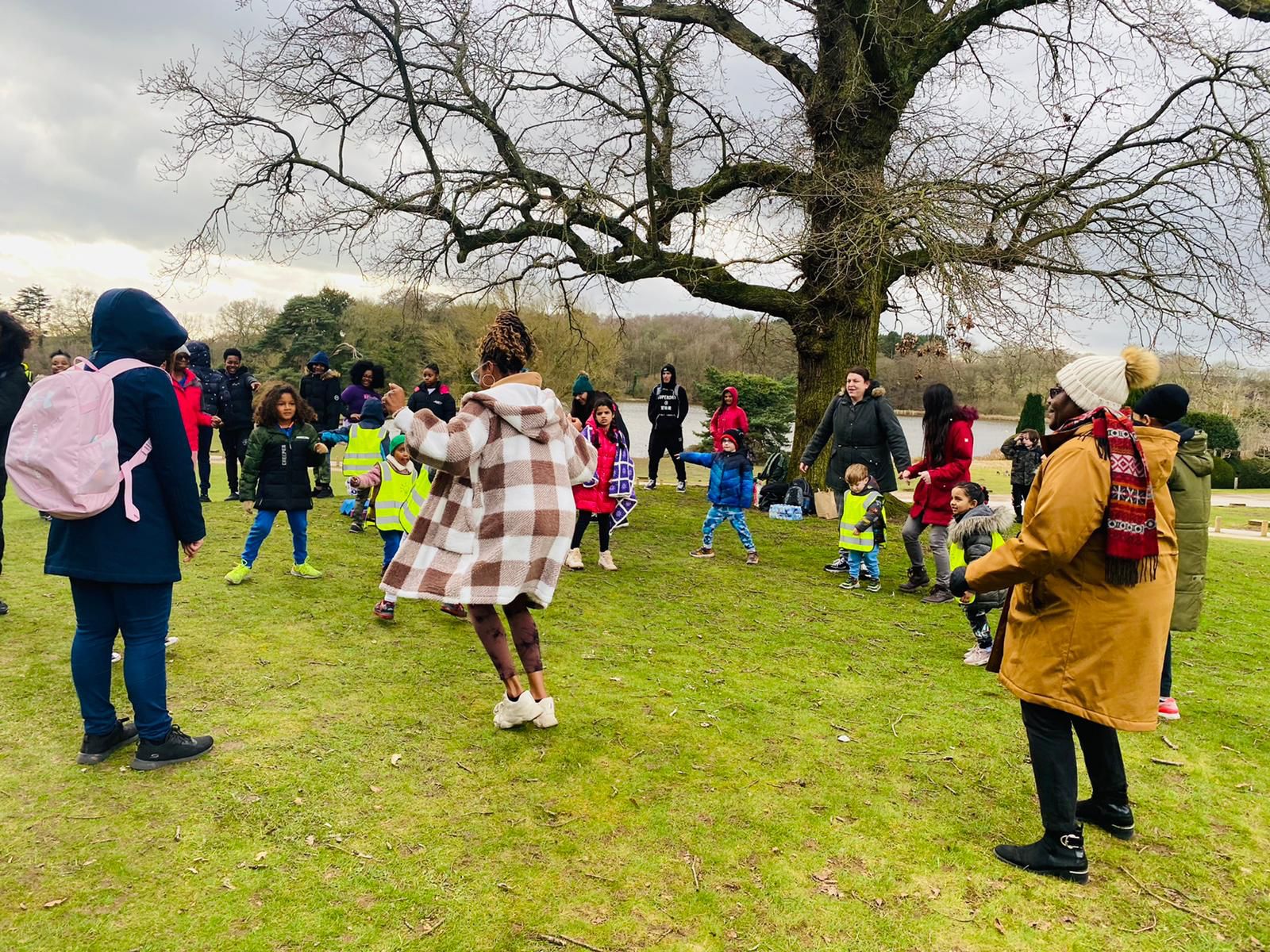Your basket is currently empty!
The purpose of the Together Fund
The Together Fund aims to help support community organisations to:
continue to survive as a result of hardship suffered in the pandemic and the current cost of living crisis; and to recover and grow;
reach and engage their audiences, particularly people who have long term health conditions, are disabled, come from lower socio-economic groups and live in culturally diverse communities;
and help their communities to become more physically active
- We supported 77 projects, including a wide range of individual community and voluntary organisations; some collaborative partnerships; and some resilience work.
- We monitored and evaluated the projects – setting learning expectations together at the start of the project; helping groups to reflect, learn, adapt, and share along the way; and gathering learning at the end via Community Organisation and Participant Surveys, and a Review Conversation where possible.
Key outcomes
All groups had attracted new participants
96% said the funding helped them to offer more opportunities for people to be active.
85% said the funding provided them with recognition for the work they do for the community.
88% reported that the funding had increased their confidence to deliver physical activity.
Activities had overwhelmingly been beneficial to participants
89% advised that it increased their confidence to be more active.
90% said the project had helped them manage their physical health.
92% felt the project had helped them to build new friendships.
86% thought the project helped them manage the mental health.
What we learned
- Systems and relationships build at the speed of trust and this takes time
- ‘Enable within’ rather than ‘do to’
- Important to have Leaders who connect with other organisations; ask for help; ask/involve/support members; make things happen; go the extra mile; and are creative and flexible
- Online and in person Connections help to access funding, knowledge, information, and venues; promoting activities, drawing in participants and volunteers
- Important to Understand the needs of the People you are trying to reach – one size doesn’t fit all. Create, build and maintain relationships with members and volunteers; spend time with them; ask and listen to them and involve them in making things happen, organically grow membership and helpers
- Use the right Resources – the appropriate helpers, venue, equipment, activity and format, method of promotion
- Facilitate a sense of belonging and make sessions fun, friendly, purposeful and safe
- Mentoring – supporting groups and individuals, giving them the methods/tools to manage their groups, in a creative, flexible and pragmatic way; empowering them to grow and develop.
- Red tape
- Technology
- Staff turnover
- Referrers not referring
- Cross group meetings with non-engaging attendees
- Payment
- Facilities
- Skillset of leaders
- Short term nature of funding
- Set learning expectations at the start
- Site/group visits a great way to gather learnings along the way so necessary adaptations can be made
- Different versions of Surveys tailored to participants’ needs
- Complete Participant Surveys whilst together as a group
- Some group leaders are comfortable in sharing what they’re doing as they’re going along. Others do what they’re asked to do at the end but mainly what happened rather than commentary about what worked well/what didn’t work so well
- Some Leads/Groups more interested than others in monitoring, evaluation and learning
- Difficult to obtain learnings when the Active Partners Trust (APT) lead is many steps removed from the group
Key takeaways
Active Derbyshire and Active Notts to help…
Groups and partnerships to work together collaboratively; building symbiotic teams with a shared purpose; a reason for being there (What’s in it for me?) and complementary connections, knowledge, skills and attitudes
Groups with forming long term strategy and funding – supporting groups to make offerings/support sustainable; finding and accessing funds
Groups navigate their way through the red tape – the processes that need to be followed, the governance, policies, procedures and accreditation
Groups/partnerships to understand the needs of their communities and how to draw them in – ‘enabling within’ rather than ‘doing to’, building physical activity into existing spaces/groups, applying a ‘one step at a time’ approach
Create a ‘learning’ culture of MEL, setting expectations up front; conducting site/group visits and conversations; encouraging ongoing monitoring/recording and learning; completing end of project surveys and reports; ensuring that third parties are on board with what we’re trying to do
Engagement


Activities
Impact – what participants gained from projects
Participants who took part in projects delivered through the Together Fund were asked a variety of survey questions at the end of their activities. As of 25th October 2023, we received 592 responses from participants. The data from these survey questions is showing us that:
86% reported that the project had helped them manage their mental health.
90% reported that the project had helped them manage their physical health.
91% reported that the project had helped them to make new relationships.
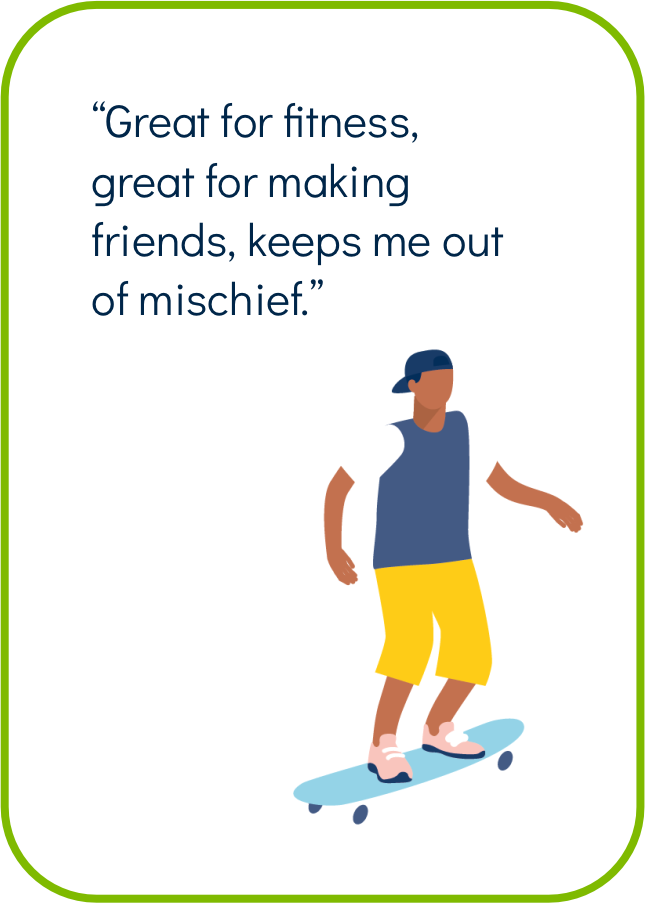
79% reported that the project had helped them feel more connected to their local community.
78% reported that the project had enabled them to try new activities.
84% reported that the project enabled them to do more activity than they would have done without the project.
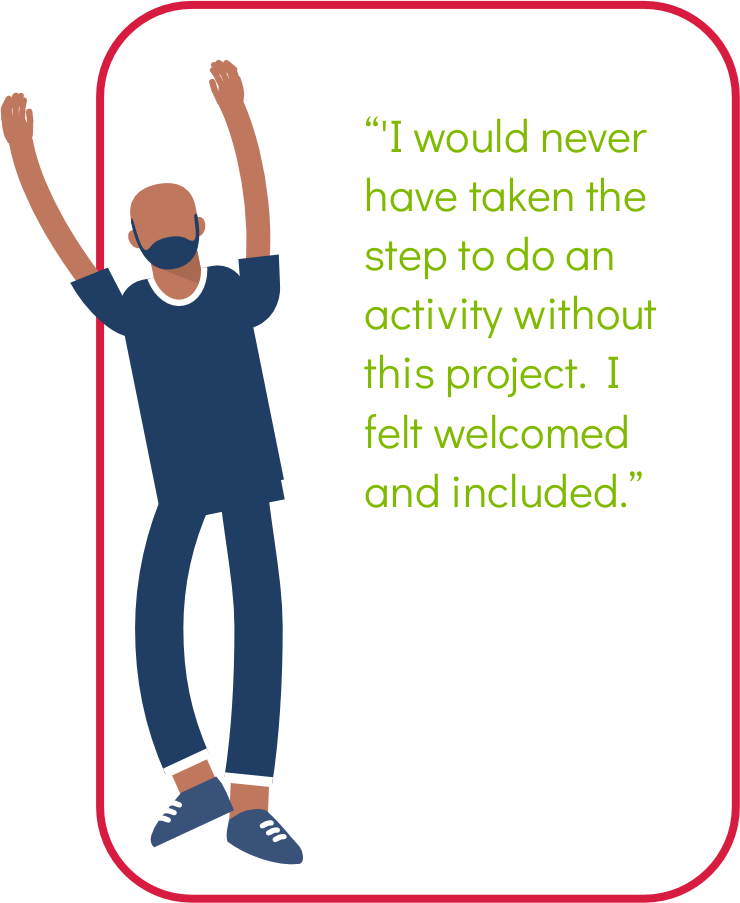
96% reported that they had enjoyed participating in the activity.
86% reported that the project had increased their confidence to be more active.
67% reported that there overall experience of participating in the project was excellent. No one scored the project below 5, where 1 is extremely poor and 10 is excellent.
Impact – what community organisations got out of the projects
29% reported that the funding had helped their organisation survive the pandemic / cost of living crisis.
86% reported that the funding had helped them to develop new relationships/partnerships with other organisations.
88% reported that the funding had increased their confidence to deliver sport and physical activity.
70% reported that the funding had helped upskill people in their organisation.
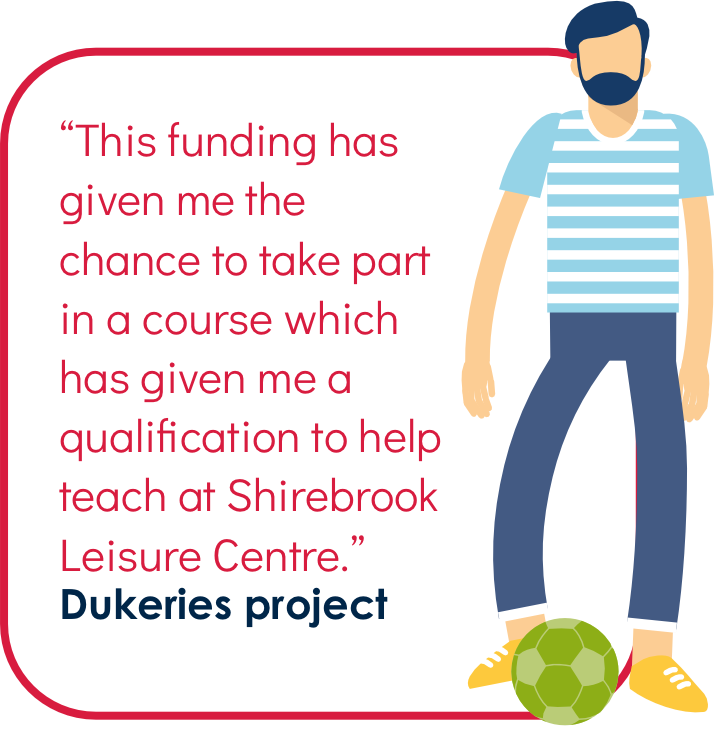
84% reported that the funding provided their organisation recognition for the work they do for the community.
79% reported that the funding had helped create a local community with more confidence to be active.
98% reported that the funding had helped their organisation to offer more opportunities for people to be active.
90% reported that the funding helped individuals connect / reconnect with their local community.
83% reported that the funding had helped people from different backgrounds mix and get on well together.
90% reported that the funding helped the local community manage their physical health.
81% reported that the funding helped your local community manage their mental health.
What did we learn?
The Enablers

Understanding people
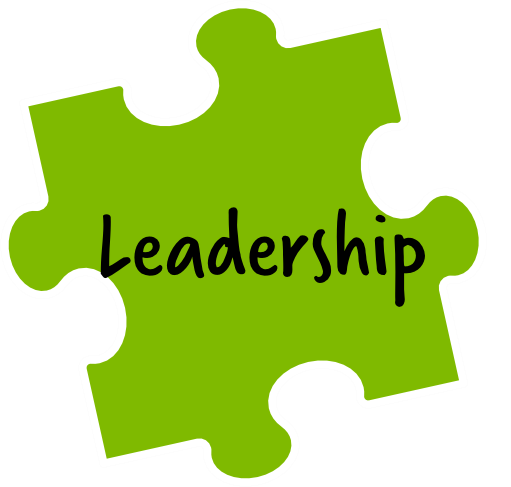
Leadership
One size doesn’t fit all – listen, ask, involve, tailor
- Build on what’s already there – ‘enable within’ rather than ‘do to’
- Create, build and maintain relationships with community, members and helpers. Ask them what they want, listen, understand their needs, make the sessions appropriate regarding venue, format, activity etc; and involve them in making things happen
- Lived experience of leaders and helpers or genuine interest in the community and their needs
- Reach out to participants via the appropriate channels eg social/paper/digital media, word of mouth, out and about, safe spaces
- Facilitate a sense of belonging. Make sessions fun, friendly, purposeful,safe
- It takes time to build relationships and introduce physical activity
Lived experience, drive, organic growth, supported
- ‘People like us’ ie reflective of the community
- Belief in what they’re doing
- Connecting with other organisations; asking for help
- Asking/involving/supporting members
- Making things happen; going the extra mile
- Being creative and flexible
- Growing volunteers, leaders and members organically; engendering a sense of belonging; the desire to give back; the power of word of mouth
- Mentoring – supportinggroups and individuals, giving them the methods/tools to be creative and flexible; empowering them to grow and develop.
- Helping them to build complementary teams, access funding, connect with referrers, partners
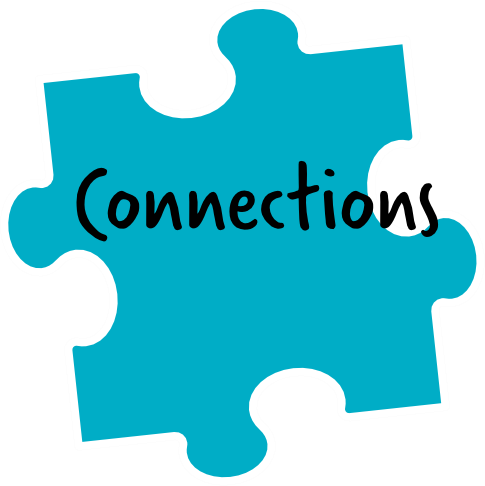
Connections
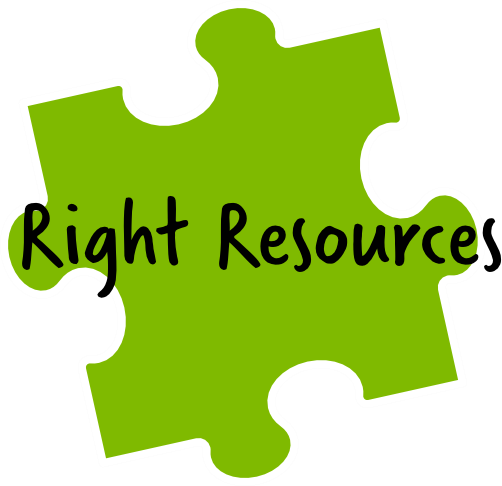
Right Resources
Stronger together
- Connections help access funding, knowledge, information, venues, promote activities, draw in participants and volunteers
- Create, build and maintain relationships with other organisations – work in partnership, use others’ complementary knowledge, skills, connections etc
- Symbiotic teams –with a shared purpose/reason for being there (What’s in it for me?), complementary areas of working, knowledge, skills, attitudes
- Take time to build the appropriate connections/referral pathways
Tailored to the community
- Appropriate, accessible, safe and known space, set time
- Appropriate equipment
- Helpers who are ‘like us’
- Food
- Something to aim for – stickers, awards, certificates, achievement file
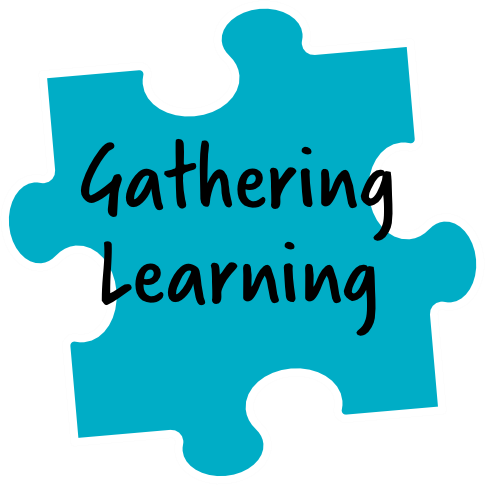
Learning about learning
Easy to do, clear communication of purpose and process, culture of learning
- Set expectations at the start with APT and Community Group leads of what is expected at the end
- Gather learnings along the way – review conversations online/onsite; reflections and learnings log, podcasts
- Site/group visits a great way to gather learnings so adaptations can be made along the way– what’s happening; what’s working well and why; what isn’t working so well and why; what do participants think and feel; think ahead about plans for going forward
- Variety of surveys to fit group needs– standard, paper, electronic, easy read – make these short and easy to complete, seems easier to complete when together
The Barriers

Understanding people

Leadership
- No representation in/knowledge of community
- ‘Doing to’ – helicoptering in new activities rather than building physical activity into existing groups/spaces
- Transition of participants
- Culture
- Language
- Wariness of working with certain communities
- Staff turnover – losing the person with the passion/understanding of the aim; delayed project starting/continuing
- Skillset of leaders – some leaders passionate about the project but either can’t deliver or don’t have the skills to come across well with referrers – can these skills be developed using training/mentoring or do they need to be supported by someone else who has these skills?
- No-one taking ultimate ownership of the project

Connections

Right resources
- Referrers not referring; Schools being unsupportive of groups/projects
- Cross group meetings rather than symbiotic teams. Members attend but pay lip service, don’t understand what’s in it for them, what they are bringing to the partnership, what benefits they can get from other team members
- Policies, procedures. accreditation, data sharing arrangements, complicated processes/hoops to go through with funders, large charities or local councils;
- Technology – more and more digitalisation which can put off those who are not digitally connected – individuals as well as groups
- Putting systems into place can delay things
- Cost of living crisis – rising costs for providers of venues and individuals
- Payment – if sessions are provided for free it becomes difficult to ask participants for payment afterwards and then the sessions stop if there is no more funding. Include some payment up front to build up reserve to allow the projects to continue post funding?
- Facilities – expensive/no outdoor lighting/shared facility/too small/not enough privacy for cultural reasons/session time too early
- Lack of Funding for co-ordinator/instructor time for social session/ 121 sessions/BSL interpreters
- Lack of accessible Transport
- Short term funding leads to disillusion of referrers and participants
- Inflexibility of computerised Membership systems – clubs, leisure centres

Learning about learning
- Difficulty of obtaining completed Community Group and Participant Surveys from some projects
- Logistics of returning surveys
How we are sharing the learning so far…
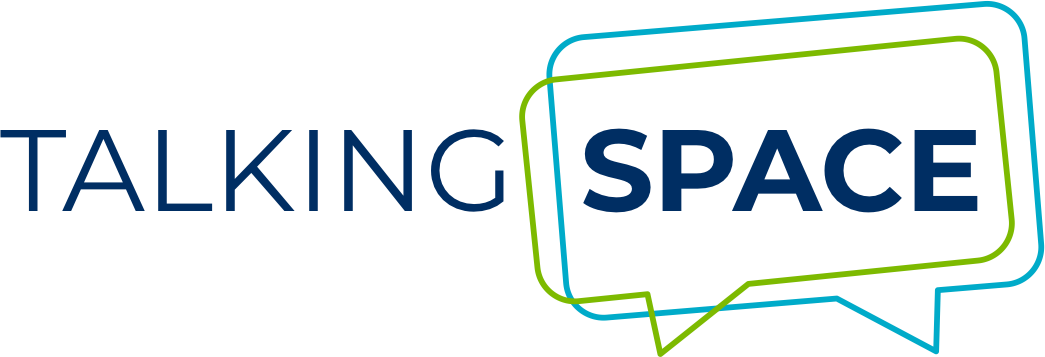
A ‘Talking Space’ is an hour-long meeting on TEAMs, held between 12.30 -1.30 on the first Tuesday of the month and attended by about 50 -100 people. They aim to give people a better understanding of different groups; how people help their members to get a bit more active; what works well and why; and what doesn’t work so well and why in making this happen. There are usually 3 speakers from different groups who each talk for about 10 minutes about their particular group or project.
Together Funded projects have featured in Talking Spaces on Accessible Information; Specific Health Conditions; Young People; and Walking
View some of the recordings here
Supporting the voluntary sector toolkit
Working on the learnings from the Tackling Inequalities and Together Funds as well as the previous Club Matters Local work, we are developing a Toolkit that Leads can use alongside the Voluntary, Community and Social Enterprise groups with whom they are working to help empower people in their communities to be active in a way that works for them.
